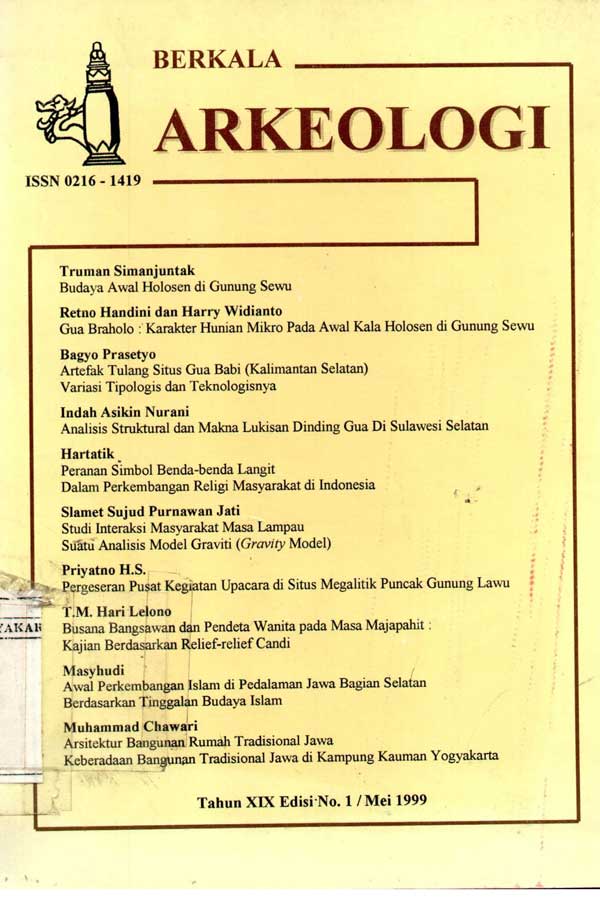ARSITEKTUR BANGUNAN RUMAH TRADISIONAL JAWA: KEBERADAAN BANGUNAN TRADISIONAL JAWA DI KAMPUNG KAUMAN, YOGYAKARTA
Main Article Content
Abstract
The existence of Kauman Village cannot be separated from the history and establishment of the Islamic Mataram Kingdom in the last period (starting from the Hamengku Buwana dynasty). In addition, Kauman is a part of the Mataram Kingdom bureaucracy. Several years after this kingdom was founded, it began to develop a place of worship (mosque). Finally, the building of this large mosque stood about 18 years after Prince Mangkubumi was inaugurated as a sultan with the title Sri Sultan Hamengkubuwana I. After this mosque was established, the kingdom then placed a royal ruler, a "penghulu". This leader is in charge of taking care of the operation of the mosque. This Penghulu occupies his house which is located north of the mosque. Later this place (home and office) was known as "pengulon". Thus pengulon this means the house and the environment where a royal ruler is located.
Article Details

This work is licensed under a Creative Commons Attribution-NonCommercial-ShareAlike 4.0 International License.
References
Budihardjo, Eko, Prof, Ir, M.Sc, 1998. Percikan Masalah Arsitektur, Perumahan, Perkotaan. Yogyakarta: Gadjah Mada University Press, cetakan keempat.
Chawari, Muhammad, 1989. Pasang Surut Perkembangan Pembangunan Masjid Besar Kauman Yogyakarta, Studi Berdasarkan Sumber Prasasti. Yogyakarta: Skripsi Sarjana pada Jurusan Arkeologi, Fakultas Sastra, Universitas Gadjah Mada.
Darban, Ahmad Adaby, 1980. Sejarah Kauman Yogyakarta Tahun 1900-1950, Suatu Studi Terhadap Perubahan Sosial. Yogyakarta: Skripsi Sarjana pada. Jurusan Sejarah, Fakultas Sastra, Universtas Gadjah Mada.
Prijotomo, Josef, 1992. Ideas and Forms of Javanese Archetecture. Yogyakarta: Gadjah Mada University Press, cetakan ketiga.
Prijotomo, Josef, 1995. Petungan: Sistem Ukuran Dalam Arsitektur Jawa. Yogyakarta: Gadjah Mada University Press.
Wibowo, H.J. dkk. 1986/ 1987. Arsitektur Tradisional Daer ah Istimewa Yogyakarta. Yogyakarta: Departemen Pendidikan dan Kebudayaan, Proyek lnventarisasi dan Dokumentasi Kebudayaan Daerah.

